HAUNTED MOUNTAIN
Haunted Mountain has evolved out my previous work that has aimed to document the processes of adaptation between humans and nature. Since living in Kelowna, I became interested in Mount Boucherie as a pseudo-wild space, a remnant of a stratovolcano created nearly 60 million years now criss-crossed with dozens of hiking trails, situated in the midst of expanding suburban and industrial development. My intent with this project to make collaboration an integral part of the process, from conceptualization to completion, as a way to push both my ideas and the realization of those ideas—filmmaking, soundtrack and installation—further.
PROJECT TREATMENT
Haunted Mountain will be an experimental short film shot on Super 16mm and will be presented as a digitally projected, three-channel gallery installation. Building on previous film work like As far upriver as you can go before having to switch to a pole, the film will have also have a synched soundtrack using stylized and processed sounds along with an integrated score. The multiple screens will allow for simultaneous viewpoints from the footage that will be shot on and around Mount Boucherie and the the multi-channel soundtrack will augment the visuals by shifting perspectives between the screens.
Haunted Mountain’s main cinematic influence is Koyaanisqatsi as there will be no traditional narrative (ie. plot). Instead a narrative will be created through the juxtaposition of shots through the editing and three-channels as well as the soundtrack and sound design. The film also takes inspiration from historical works of landscape representation, from the landscapes of Pieter Bruegel the Elder to Hokusai’s Thirty-six Views of Mount Fuji. I don’t want this film to merely be a film about a mountain, but a film about the human activity that surrounds and interacts with this former volcano in the present day.
The overall running time for the film will be approximately half an hour. I'm also considering the the possibility of making a single-channel, stereo mix cut of the film that could screen in a cinema setting.
Mock-up of three-channel installation
PROJECT TIMELINE
As of mid-January, I have already begun film on and around Mount Boucherie. Production will continue to at least the summer time, when the fire season starts. At this point I will decide, based on the footage shot up to this point, and how the soundtrack is taking shape, if I will continue filming for the rest of the year, to end filming at the beginning of January 2020.
In February, I am going to cut a 90-120 second proof of concept out of the 16mm test footage (shot fall 2018, see below) that will include a rough idea of the soundtrack, so that by early March I can use it for gallery proposals for this project.
There is a Canada Council Research and Creation grant cut-off date coming up 3 April 2019. I will be putting together a grant proposal, including a detailed budget, for this project by early February to submit as early as possible. And I’ll be applying to the BC Arts Council for a Media Grant in May 2019.
STRUCTURE OF THE FILM
The film will begin with an overture, roughly around 3 minutes. This section of the film will either be a single still image or series of cross-fading still images.
The first chapter of the film will be a series of impressionistic images of fire, smoke and a looming errupting from a primordial landscape. This section will be an imagined representation of the birth of the volcano that is now the dormant Mount Boucherie. This section of the film will be shot during spring and summer.
The second chapter will take place on the mountain, documenting the changing seasons, intercutting macro shots of the plants and rocks on the mountain with shots of Mount Boucherie taken from across Okanagan Lake and up in the surrounding hills. There will be no traces of obvious human influence or activity in these shots.
The third section of the film will reveal the human activity around the mountain, the suburban development, the highway below, people hiking on the mountain, etc. I envision the tone of this part of the film to feel like a horror movie, using elements of the genre such as creeping zooms and off-kilter framing and pushing the soundtrack in this direction.
Each section of the film will have a different energy and aesthetic, but whereas the visuals will be distinct from each other in the different chapters, I think the soundtrack, and sound design, will be more fluid and will be able to contrast itself between chapters, but will also tie the sections together either through the development of a theme, or in the repetition of similar sounds and rhythms. For example, if there was a theme heard in the overture and following three chapters, these are the aspects of how I think it would it would be represented:
Overture — stripped down, direct yet soft, like an overcast sky over rolling hills of grass that lead down to a lake
Chaptet I — muscular, fire and flames, birth from destruction, the sound of thunder pounding through air thick with smoke
Chapter II — awakening, the cresting glow of the sunrise over a snow-blanketed landscape, all the time the world, the taste of the first drink at the start of a vacation
Chapter III — anxious, vulnerable, a clock ticking, walls closing in, the intangible feeling of being followed, getting a sliver underneath a fingernail
Other than the overture, I’m not sure if there will be title cards to demarcate each section, but either way there will be transitions in both the visuals and the sound between chapters.
VISUAL TREATMENT
16MM TEST FOOTAGE
Three-minute rough edit of colour and b/w footage shot in October 2018 near Eain Lamont park and trails on the north side of the mountain. I just purchased a 16mm Bolex camera this summer, so it was an extended test of the camera and lens, but also to try out different filming techniques with the zooms and pans, exposing the film to light leaks, and generally getting a sense of how the landscape is going to look on film.
LOCATION VIEWS
Photos shot in November 2018 on the east side of the mountain going up the Andesite Grinder trail and descending the Boucherie Rush trail.
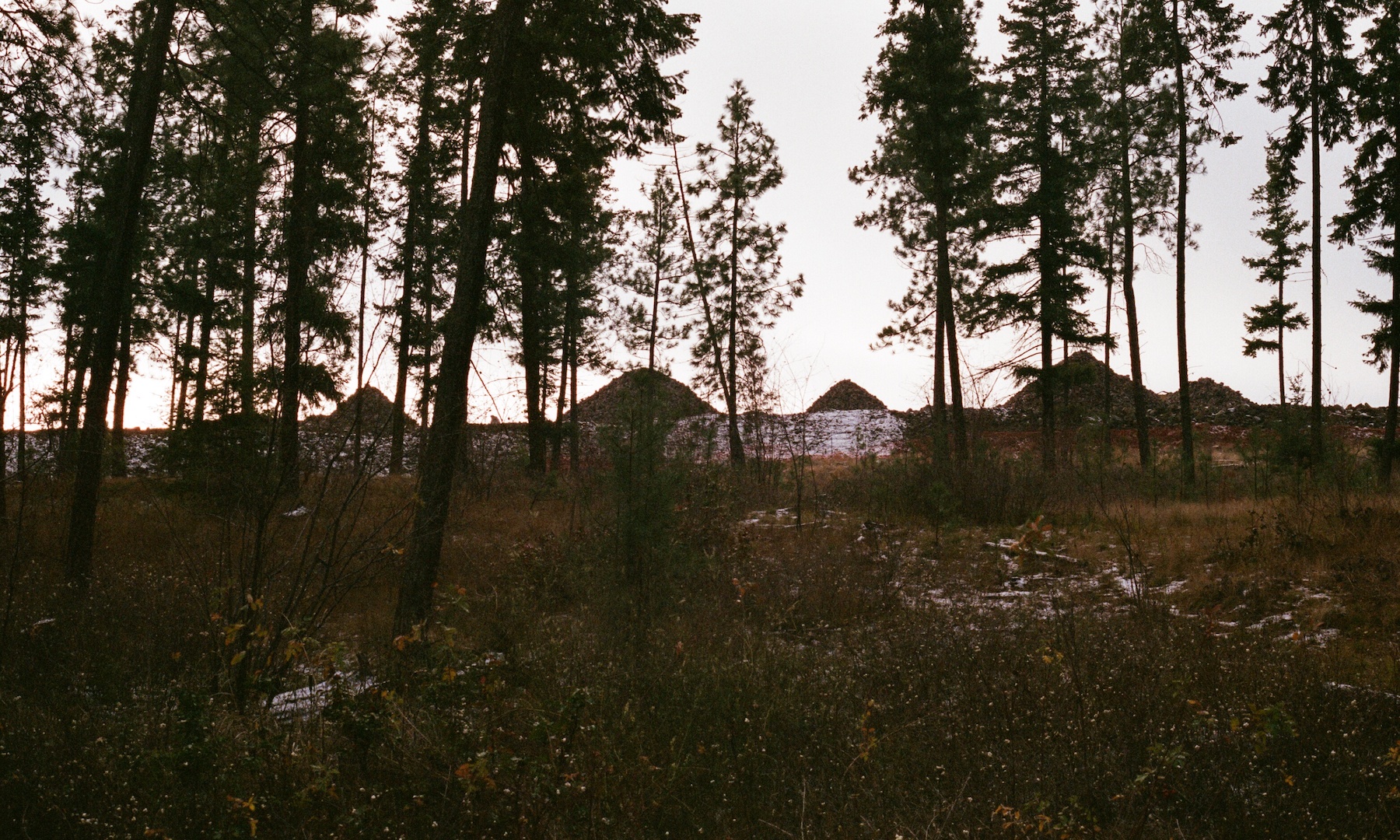
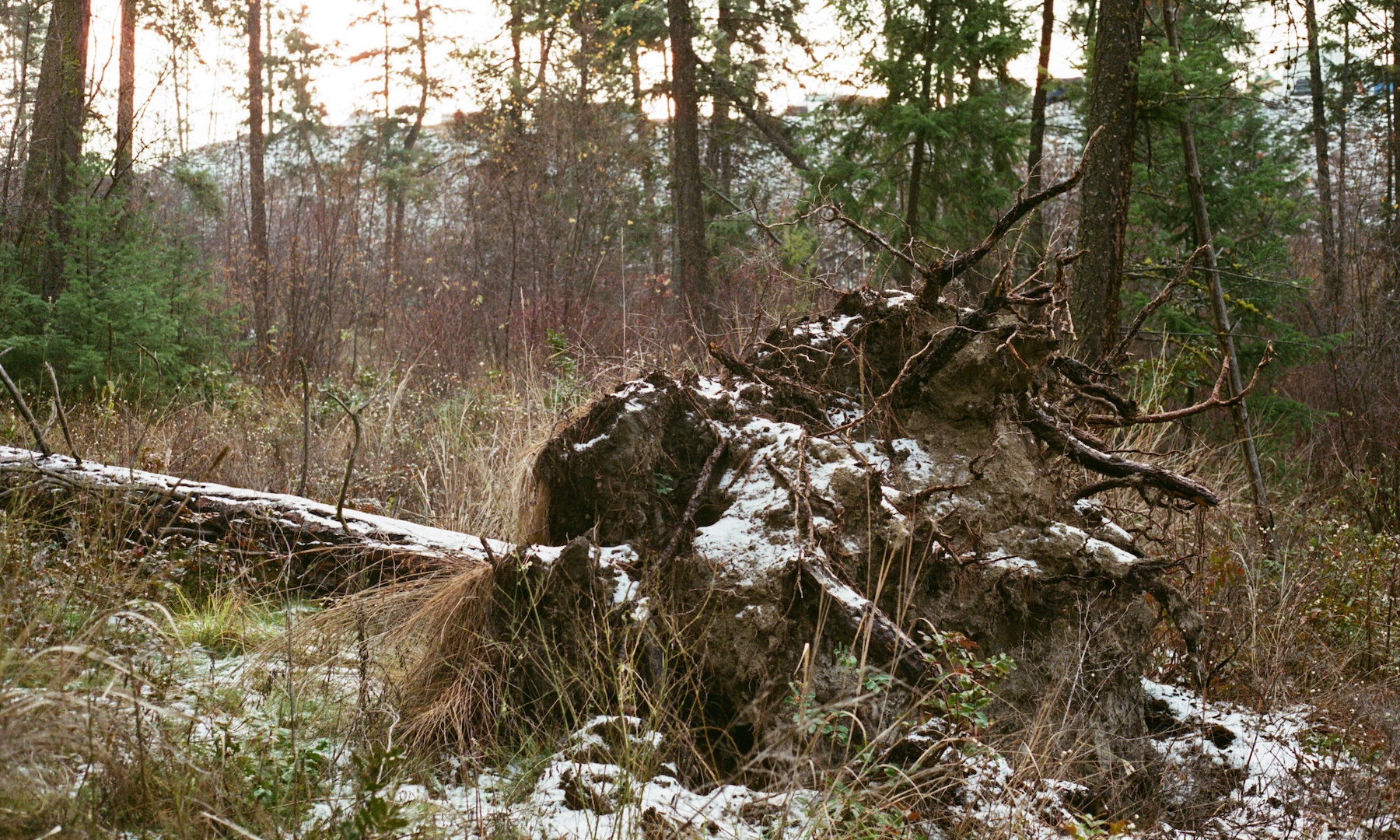
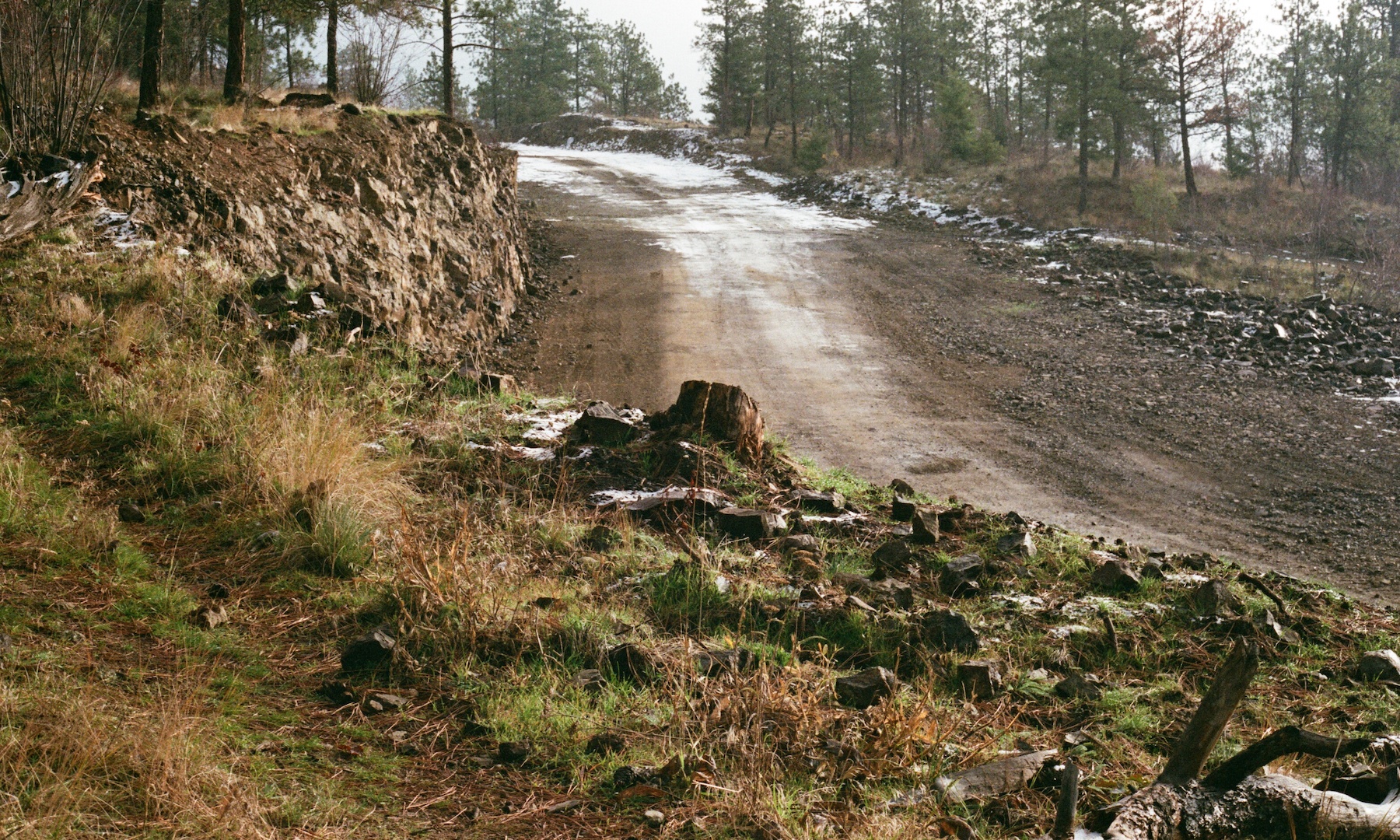
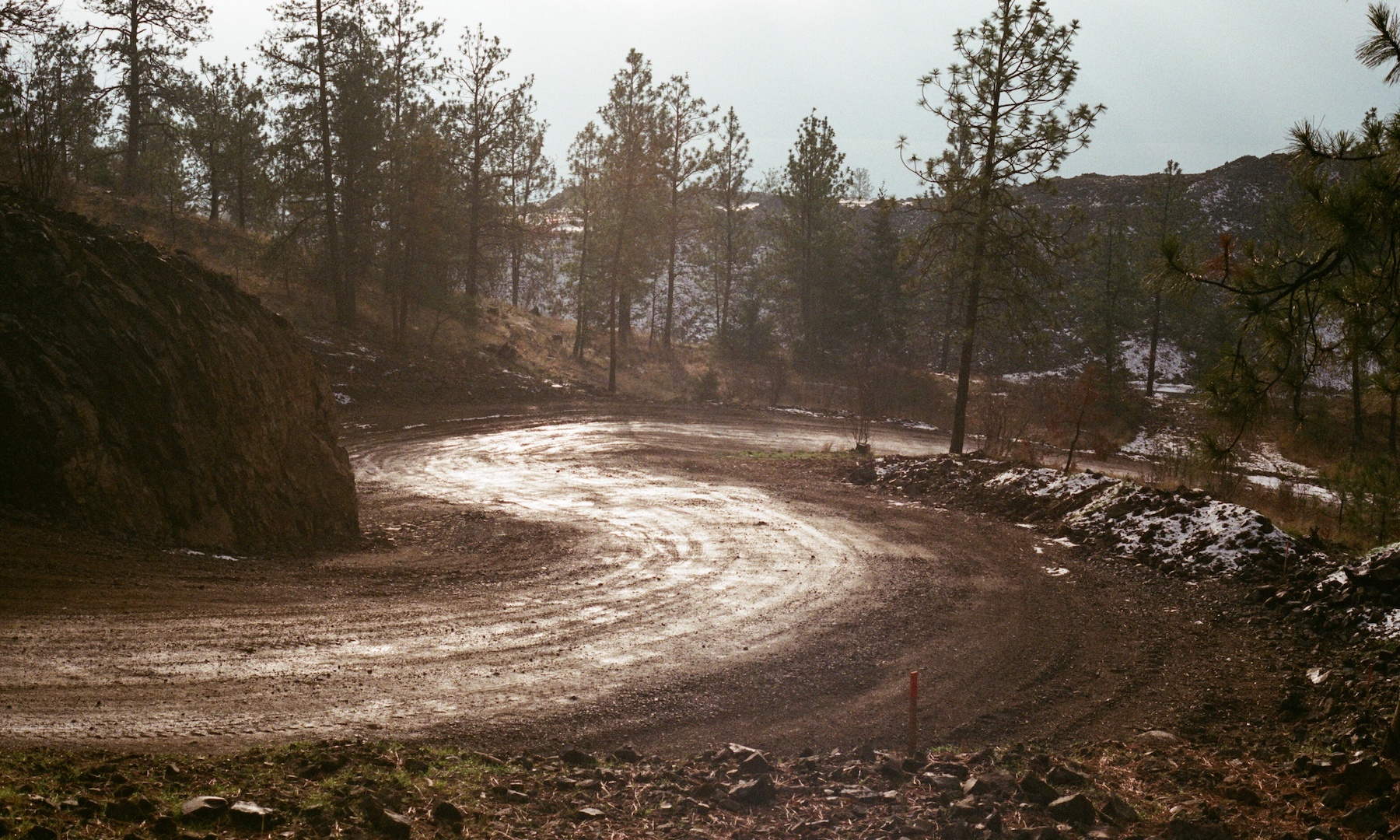
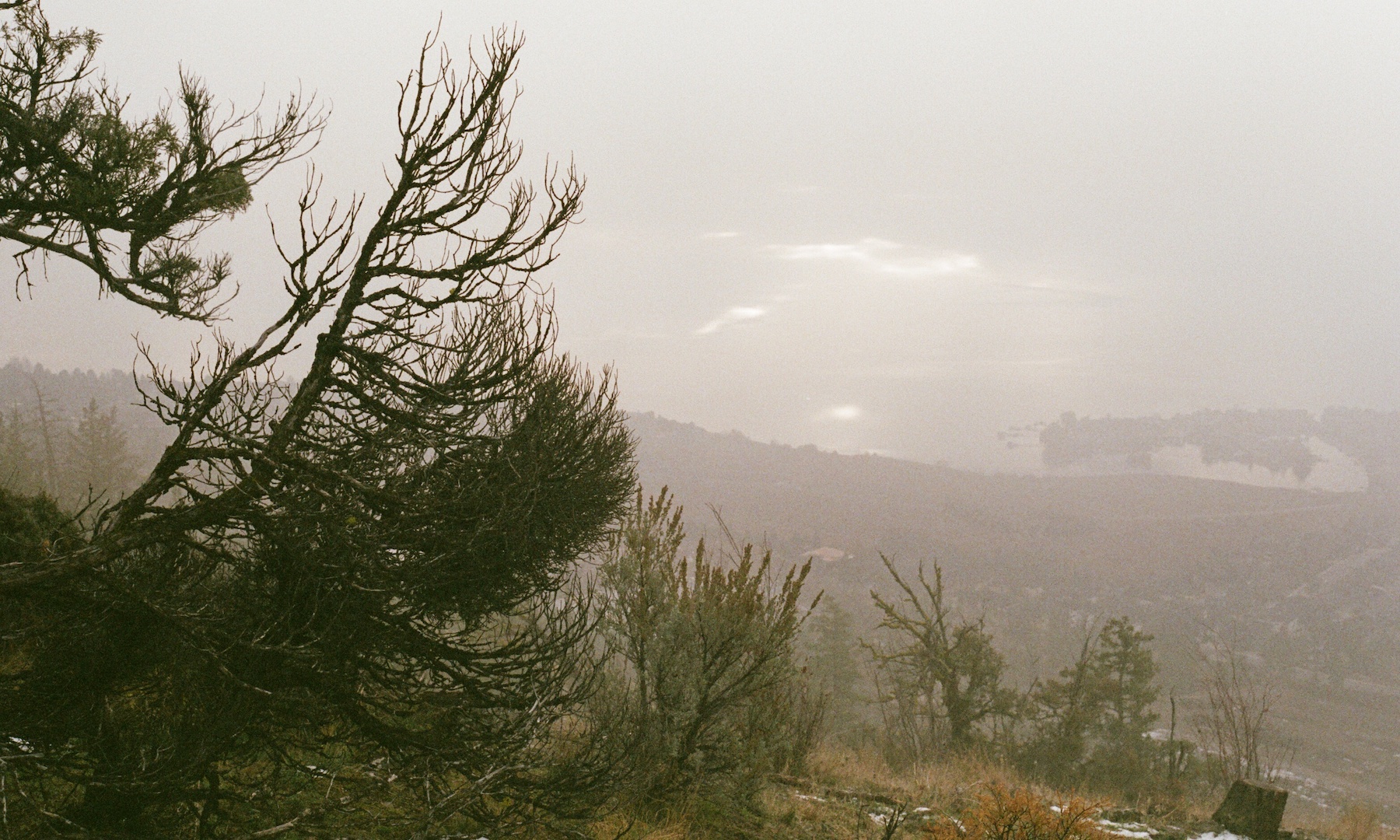
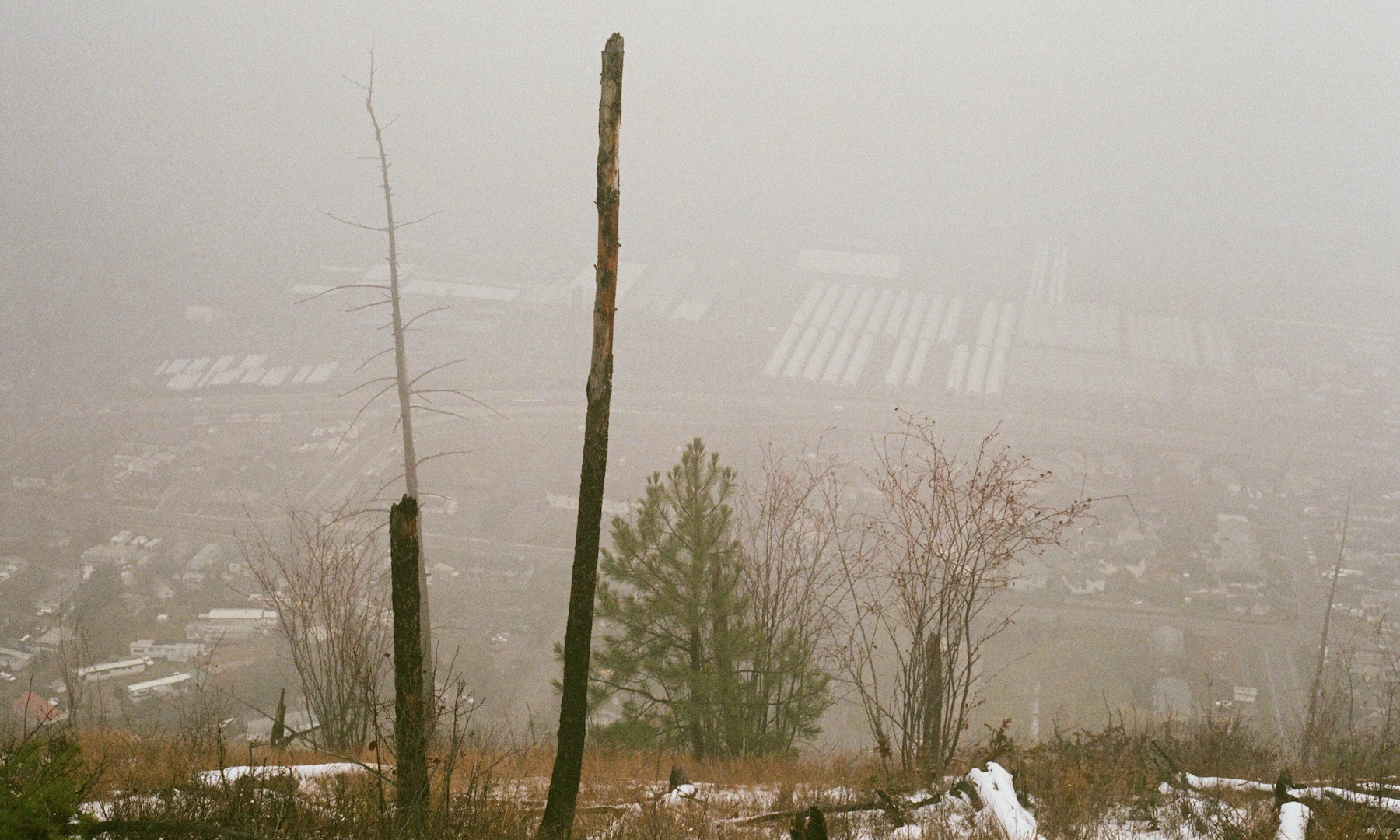

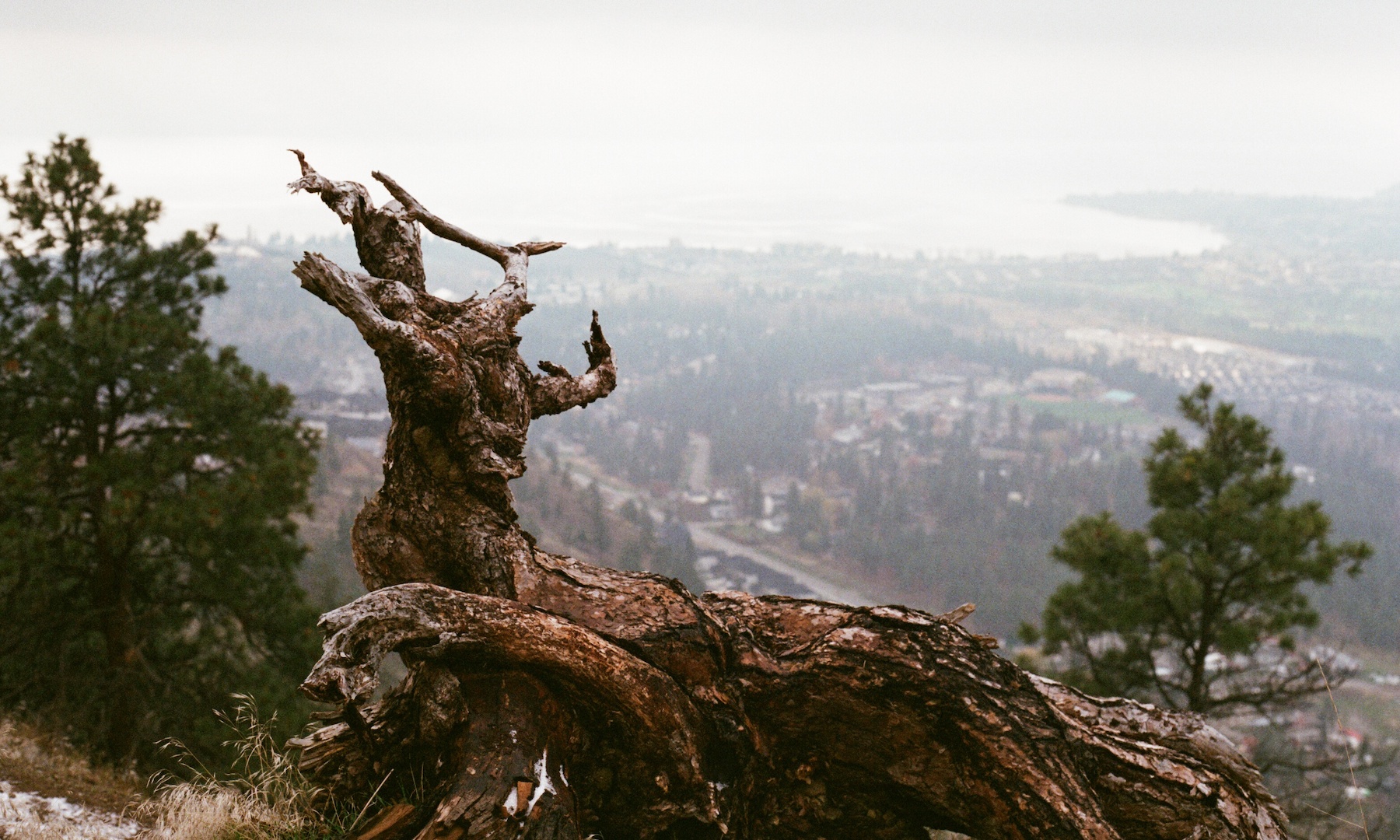

Photos from October 2018 shot near Eain Lamont park and trails on the north side of the mountain.
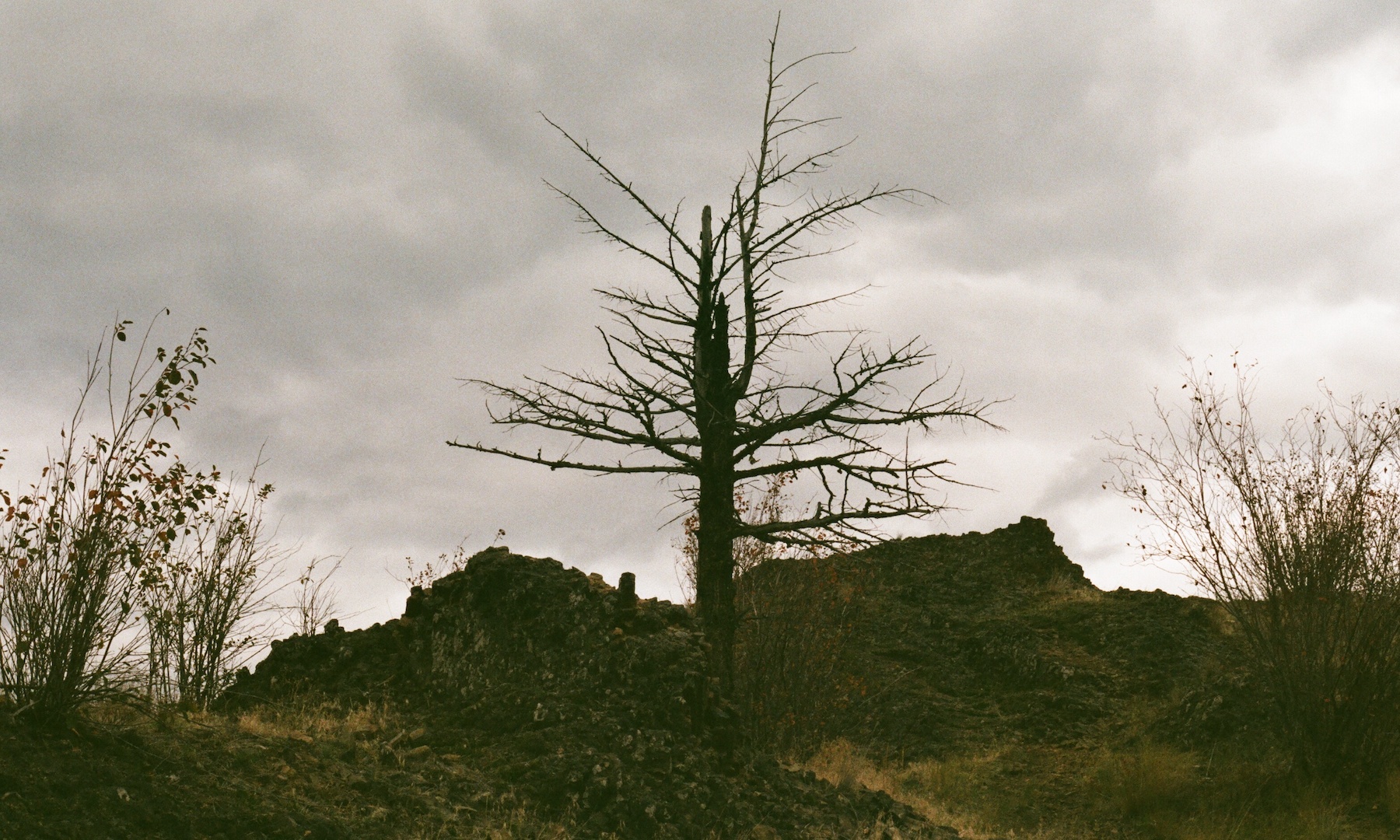
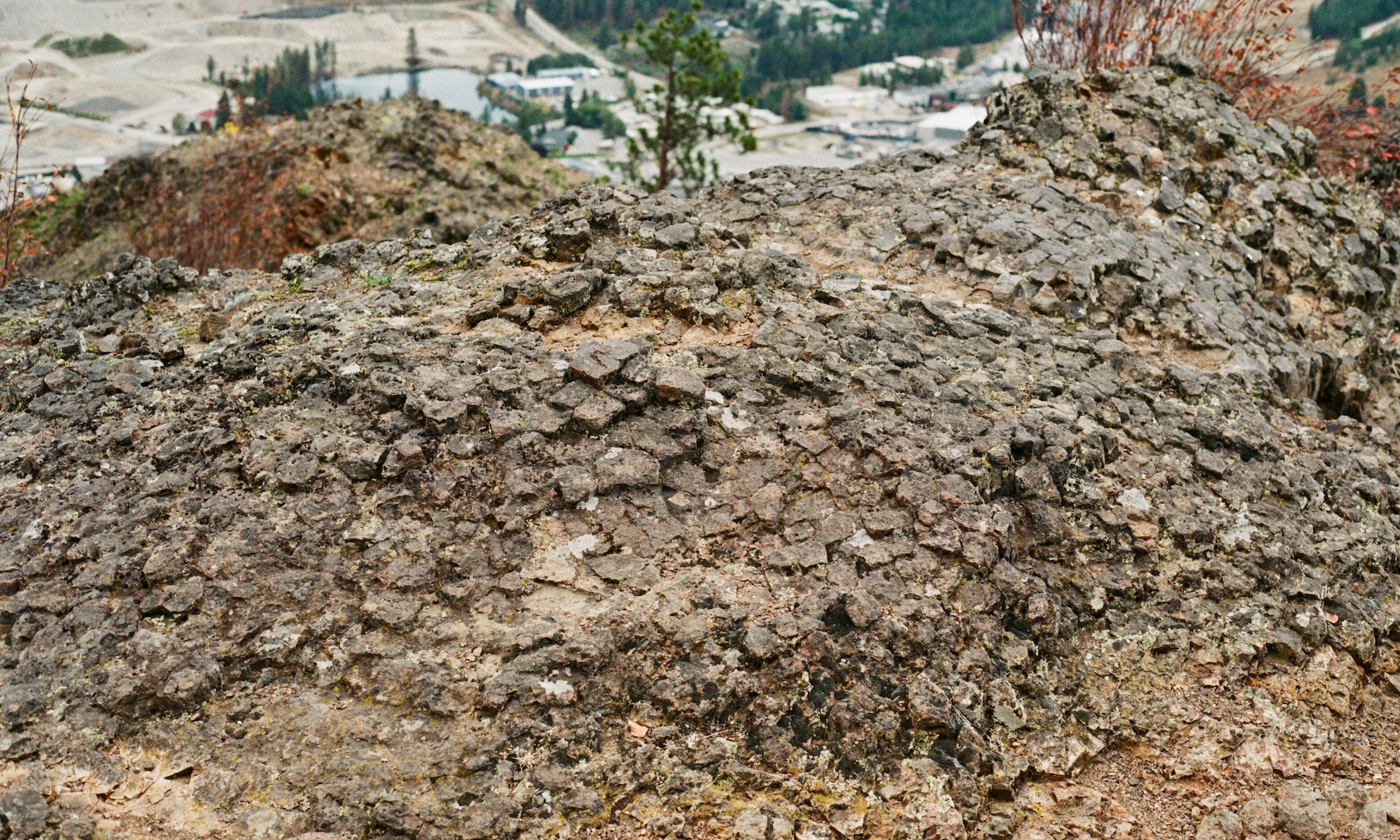
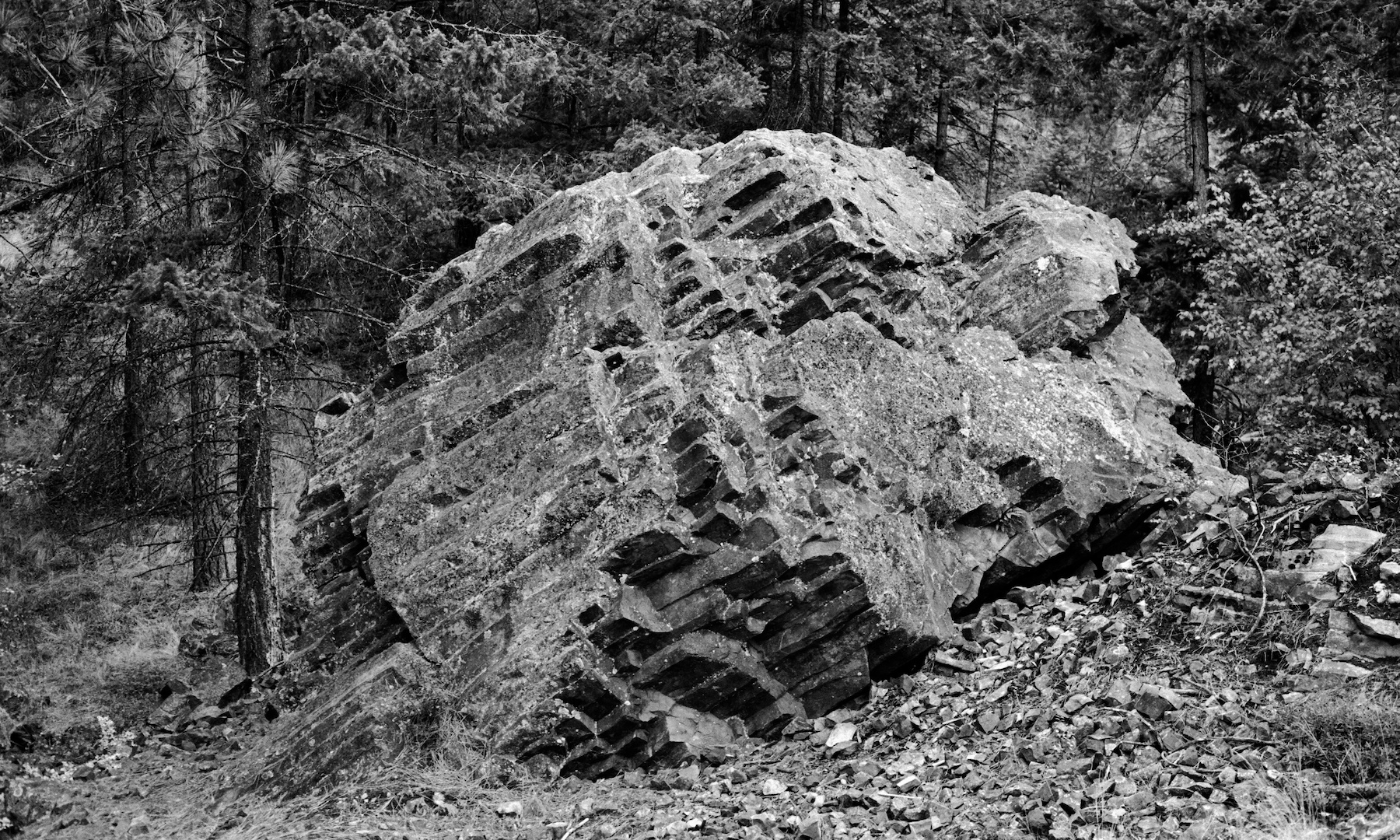
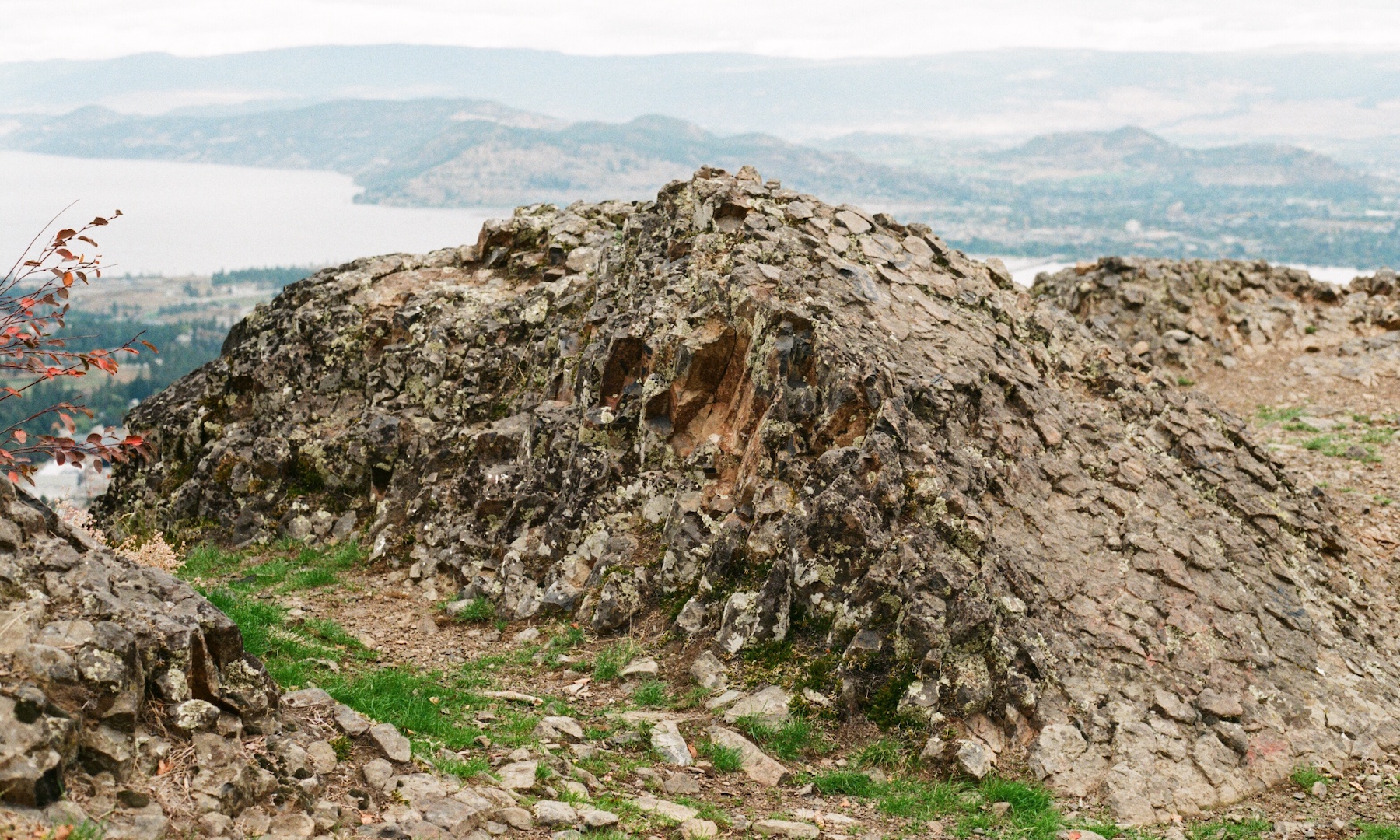
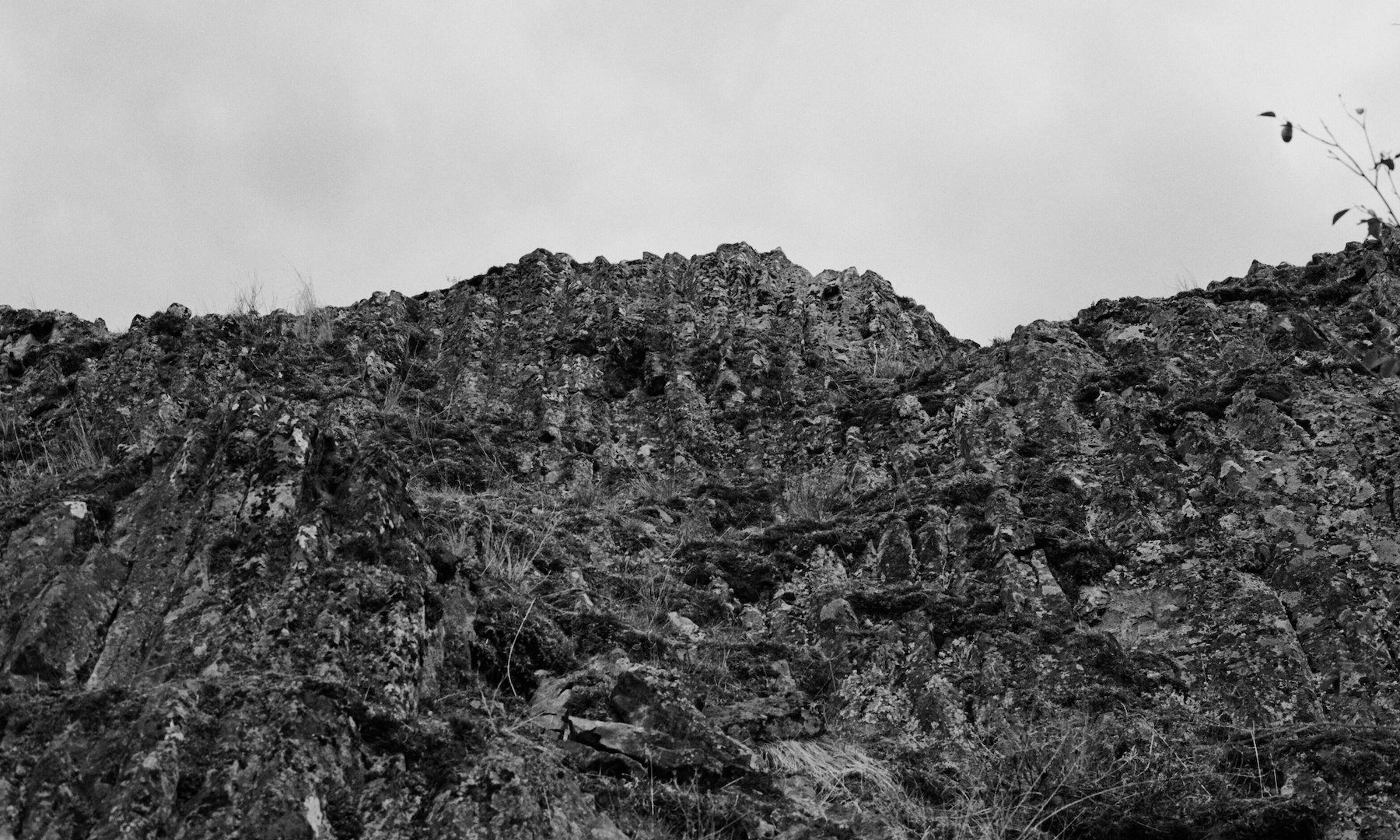
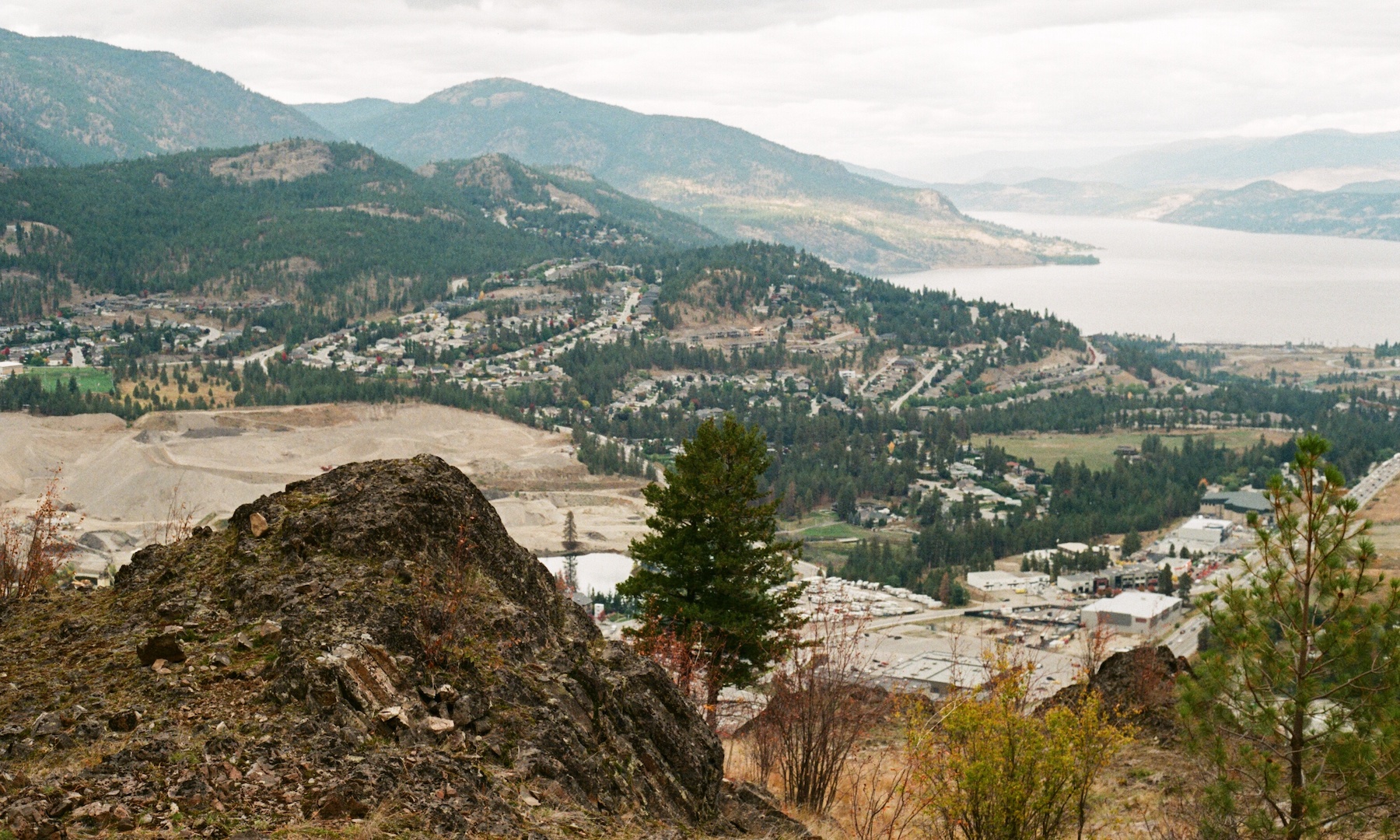
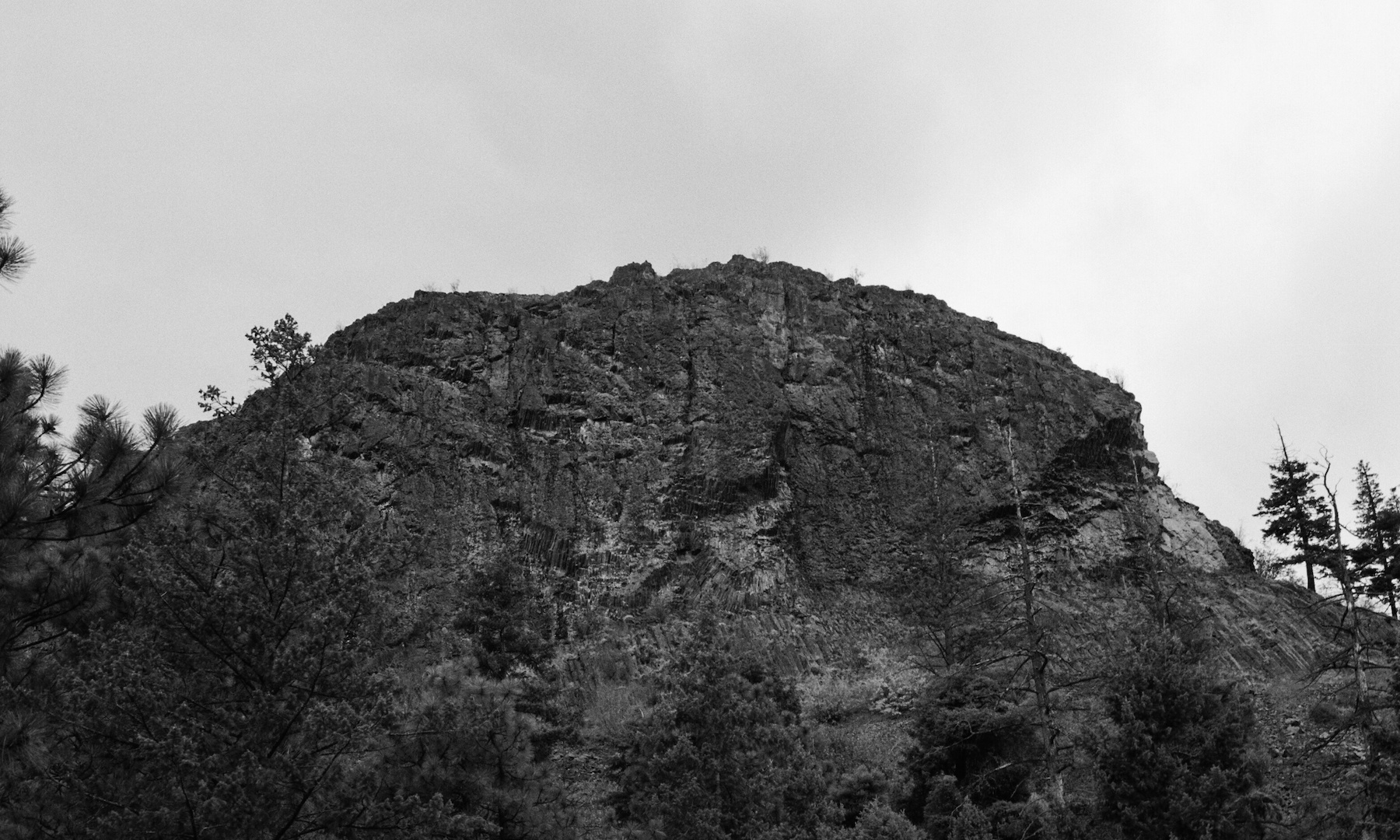
SOUNDTRACK TREATMENT
PLAYLIST
The main point of inspiration for this project is the 1982 Godfrey Reggio film, Koyaanisqatsi, specifically in how, using no dialogue and almost no text, a narrative is communicated to the viewer using only visuals and soundtrack. I don’t necessarily see the Philip Glass score as a direct inspiration for this project, but I am interested in how the repetitions and arpeggios reflect the repetitive patterns in the film’s images. Also, I like that the only voices heard in the film are in the musical score, mainly chanting. I found a copy of the movie (in a 9-part playlist) on YouTube, included below for reference.
The playlist is quite extended, I’ve basically included soundtracks I feel that have both an applicable tone and ones that I’ve just been listening to a lot lately. Other than Koyaanisqatsi and the Tangerine Dream soundtrack for Sorceror, most of the scores are from the last few years.
* I still need add notes on the specific scores and how I see them relating to this project — I will also be putting together a couple new playlists that will correspond to the themes I’m imagining for the three different chapters.
KOYAANISQATSI
SPECIFIC MUSIC FOR REFERENCE
A couple long progressive soundtrack favourites that I couldn’t find on Spotify (Phaedra is on there, but it’s some weird new version, and it sucks).
The Akira soundtrack is easily one of my favourite soundtracks of all time, and Geinoh Yamashirogumi’s album, Ecophony Rinne, which came out before this soundtrack is also amazing.
